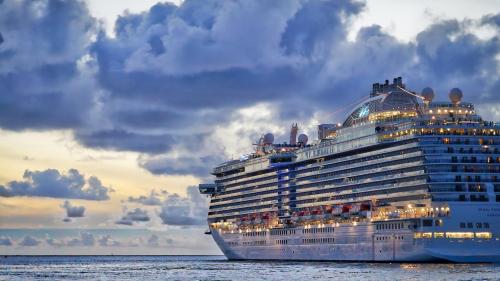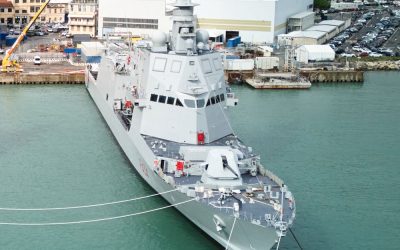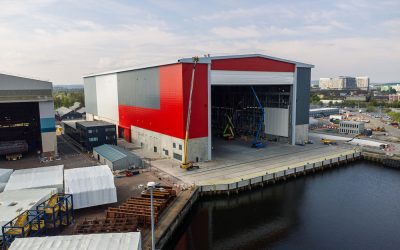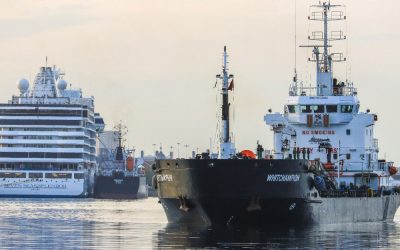The social relations between the various parties involved in shipbuilding in general are a topic that probably has received little attention in academia. However, Leena Jokinen’s doctoral thesis, ‘Ideation for Cruise Ships – Collaborative Interorganisational Foresight in Cruise Ship Concept Ideation’, which was recently approved at the University of Turku in Finland, looks at these questions and the work has also produced results with potential practical implications.
Jokinen’s work focuses on two points: firstly, how to capture the dynamics of futures-focused thinking and acting in everyday work contexts, and secondly how futures studies (FS) methodology can be developed for analysing how social relations shape the future. By drawing on corporate foresight (CF) research, which develops knowledge about futures and alternatives to support organisational decision making, the thesis explores the social aspects of future cruise ship concept ideation and sustainability enhancement.
“The results confirmed that while ship building is an evolving process, futures-focused ideation and collaboration play a pivotal role in the concept ideation phase of planning. However, ideation and the incorporation of new visions tend to happen in relatively closed circles of actors that include shipowner intra-organisational teams, design agencies and intra-organisational design teams within the yard. In the subcontractor network, futures-focused ideation is scattered and tends to be organised around shipyard actors, such as managers and department heads,” Jokinen notes in the abstract of the work.
“The challenge is in linking social and operational processes to facilitate the formation and flow of futures insights between different systems,” she adds.
The fact that relatively few actors are involved in the ideation and incorporation of new ideas has a number of practical implications, Jokinen tells The Naval Architect.
One of them is that there is a tendency to develop ideas that have already been put in practice by small steps, while bold and new ideas often tend to be sidelined. In addition, the views and opinions of relatively few individuals can have a significant weight in the outcome of the ship concept. Jokinen, whose work is based on experiences at the shipbuilding cluster in the Turku region where Meyer Turku has its yard, also found that there is no platform that would facilitate the inclusion of ideas and innovations that come from the supplier and contractor network to the overall concept planning workflow.
“A lot of input is being missed out. The shipyard itself has been concerned for quite some time that there is no mechanism that would allow the ideas of actors in the outskirts to be included. In fact, the entire mechanism of work may be inclined to reject radical innovations,” she says.
This, again, could be expanded to the question, what exactly is the role of the shipyard, the owner and the supplier and contractor network in the concept design and innovation process? “There are those who say that it is the owner who does take care of this and the role of the shipyard is to build the kind of ship the owner wants. Others, by contrast, say that the yard should actively participate in the innovation process. Personally, I would take this view,” Jokinen notes.
In practice, a certain cyclicality can be detected in how cruise ship builders have seen their role in this work. “In the early 1980s, Kai Levander sent members of his team to places like Las Vegas to find out certain things,” Jokinen says, referring to the then head of R&D at Wärtsilä’s shipbuilding division which used to own the Turku yard at that time.
Four key points
She divided her work in four research questions. The first one asked how foresight can contribute to cruise ship concept ideation. This was followed by, what interorganisational relationships can be identified within net- works of ship concept designers and planners? The third question queried how futures insights on sustainability enhancement flow in the joint project context and who are the focal insight brokers and sources of sustainability enhancement within the project network. Finally, she asked what futures images of sustainability enhancement are constructed within the joint project context and how can the evolution of futures images in workshop settings be analysed.
Acknowledging that concept design and innovation process deeply entwines the participants – the owner, yard, design agencies, etc. – once the basics and specifications of the new ship have been decided by the owner, the collaborative interorganisational foresight approach “facilitates the analysis of futures thinking within this process and strengthens the evaluation of different partners’ impacts.”
Moving on to the second question, Jokinen notes: “While international architects and design agencies have driven concept design, Finnish actors have played key roles in engineering planning, project management and construction based on a deep understanding of futures perspectives. From a collaborative foresight perspective, the shipowner, design company and production yard define the basis for insight creation and adoption. In the concept ideation process, futures-focused actions are embedded in operational-level and collaboration practices that do not include outsiders or actors in the wider network.”
Referring to a recent study on sharing of future ideas on sustainability between various commercial, government and non-governmental organisation (NGO) actors, the outcome showed that the joint business-academia project in question had a weak role in establishing coherent collaborative foresight actions, but the collaboration within the joint project offered possibilities for sharing future-focused ideas with the participating actors.
Regarding the final question, the study identified four futures images: money rules, the customer is always right, local economy focus, and the most sustainable ships in the world. “To explore the construction of futures images, the study analysed the content of workshop group discussions in terms of content, range of alternatives, timescale, sociality and resonance, highlighting the role of the social network in resolving sustainability challenges,” Jokinen says in her thesis.
For the full article please see the September edition of The Naval Architect.






